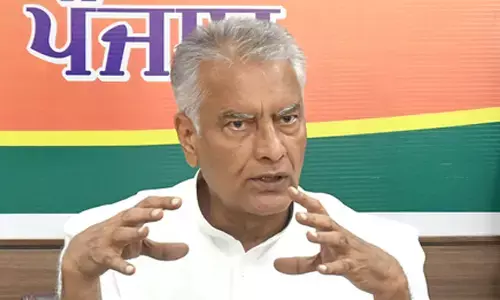Growing scare of pre-diabetes, a threat to the young population

Growing scare of pre-diabetes, a threat to the young population
While there is a myth that disease is not commonly associated with the younger population, the incidences among children, adolescents, and young adults over the last decade are alarming. Out of the total prevalence rate of 12.3 per cent of prediabetes in the Indian population, about 8.4 per cent is among adolescents and adults. Apart from obesity, genetic and metabolic factors; low physical activity, unhealthy dietary practices with the intake of junk and sweetened foods, and substance abuse are significant risk factors for the pre-diabetes condition
An alarming notification from the National Urban Diabetes Survey indicates that 14 per cent of the Indian population has prediabetes. Out of the global burden of 88 million pre-diabetic patients, 77 million belong to India. Pre-diabetes is a highly prevalent disease in the Southeast Asian region with an epidemic rate of 8.9 per cent. Patients with prediabetes are more likely to fall prey to premature morbidity than others. About 2 per cent of all deaths in India are due to prediabetes, observes WHO.
Dr Chandan Choudhary, a leading Nephrologist associated with NephroPlus, "Prediabetes is a preliminary condition of diabetes characterized by a high blood sugar level; higher than normal but lower enough to not be considered type 2 diabetes. The pancreas secretes insulin which is designed to distribute sugar in all body cells; however, due to the increased sugar content in blood, there is less secretion of insulin which ultimately diminishes the functioning of the pancreas." In some cases, the incapacity to process sugar may develop from impaired lifestyle patterns, unhealthy dietary habits, and genetic dispositions. However, the core cause of prediabetes still remains unknown.
While there is a myth that disease is not commonly associated with the younger population, the incidences among children, adolescents, and young adults over the last decade are alarming. Out of the total prevalence rate of 12.3 per cent of prediabetes in the Indian population, about 8.4 per cent is among adolescents and adults. Apart from obesity, genetic and metabolic factors; low physical activity, unhealthy dietary practices with the intake of junk and sweetened foods, and substance abuse are significant risk factors for the pre-diabetes condition.
Since the progression of prediabetes to diabetes is not inevitable, early detection can help remit and prevent the disease. In most cases prediabetes is asymptomatic, making it difficult to detect. Hence it is important to know its risk factors. Some of the common early symptoms are - going to the toilet more often, especially at night; exhaustion, sudden weight loss, genital itching or thrush; cuts and wounds taking longer to heal, blurred vision, feeling extremely thirsty.
If you notice any of the above symptoms or are worried about prediabetes, consult your doctor and ask for a blood test. The most common test will be checking your HbA1c levels which is your average blood glucose (sugar) levels for the last two to three months. However, always remember this can be remitted by making mindful and healthy lifestyle choices.
In forethought, high sugar levels in prediabetes can adversely damage other organs, one of which is the kidney. The condition can impact kidney functions causing chronic kidney disease (CKD). CKD and prediabetes have similar risk factors like high blood pressure and cholesterol, a history of cardiovascular disease, being overweight, and having a sedentary lifestyle. The burden of having both prediabetes and kidney disease is often associated with the older population. However, the alarming rate of young adults in India with prediabetes or undiagnosed prediabetes makes them vulnerable and at high risk of CKD.
Consulting a nephrologist trained in the diagnosis and management of kidney disease to recognize risk factors such as high blood pressure and diabetes and to seek consultations for dialysis or kidney transplant treatment when the kidneys fail, is the first step to precaution followed by regular consultations.
With the highly vulnerable population, as per International Diabetes Foundation 80 million adults live with diabetes in the country, and is expected to reach over 130 million by 2045, the need to get help at the right time to avoid CKD is crucial. As we now know that pre-diabetes is reversible, it is important to make those small but impactful lifestyle choices from an early age to manage the early onset of pre-diabetes - managing your diet by controlling the intake of carbohydrates and sugar including food rich in fiber like beans, legumes, lean meat, whole grains, and seasonal fruits and vegetables and taking multiple small meals throughout the day so that you remain full for a longer time to reduce the untimely and unhealthy cravings; engaging in physical activities by including a work session (exercises, skipping, Zumba, run) of 30-40 minutes in your daily routine and; importantly consult your doctor and do Hba1c, fasting blood glucose and postprandial glucose test. These tests will give an estimate of how your body responds to sugar after a meal, while fasting, and over 2-3 months.










